Wisbech (UK Parliament constituency)
Wisbech is a former United Kingdom Parliamentary constituency. It was created upon the abolition of an undivided Cambridgeshire county constituency in 1885 and was itself abolished in 1918.
| Wisbech | |
|---|---|
| Former County constituency for the House of Commons | |
| 1885–1918 | |
| Number of members | one |
| Replaced by | Isle of Ely |
| Created from | Cambridgeshire |
Boundaries
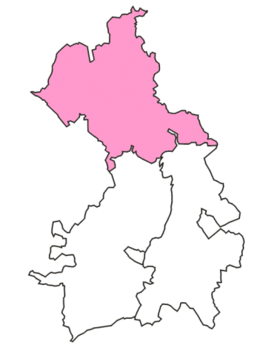
The Redistribution of Seats Act 1885 split the former three-member Cambridgeshire parliamentary county into three single-member divisions. One of these was the Northern or Wisbech Division. During the committee stage of the 1885 bill, the MP for Cambridge University, Henry Raikes made an unsuccessful attempt to rename the constituency as the Northern or Isle of Ely Division.[1]
The constituency consisted of the towns of Chatteris, March, Whittlesey and Wisbech with the surrounding parishes of Benwick, Doddington, Downham, Elm, Leverington, Littleport, Manea, Newton, Parson Drove, Thorney, Tydd St Giles, Welches Dam and Wimblington.[2]
The area was bounded by the constituencies of Spalding to the north, North West Norfolk and South West Norfolk to the east, the other Cambridgeshire divisions of Newmarket and Chesterton to the south and Ramsey, Peterborough and North Northamptonshire to the west.
The constituency was dominated by the Fens, a district of Liberal-inclined smallholders. The towns in the division, predominantly Conservative Wisbech and the more Liberal-inclined March, were outvoted by the rural areas.
Upon its abolition under the Representation of the People Act 1918, the constituency formed the bulk of the new parliamentary county of Isle of Ely.
Members of Parliament
| Year | Member | Party | |
|---|---|---|---|
| 1885 | Sir John Rigby | Liberal | |
| 1886 | Charles William Selwyn | Conservative | |
| 1891 | Arthur Brand | Liberal | |
| 1895 | Charles Tyrrell Giles | Conservative | |
| 1900 | Arthur Brand | Liberal | |
| 1906 | Cecil Beck | Liberal | |
| 1910 | Neil Primrose | Liberal | |
| 1917 | Colin Coote | Liberal | |
| 1918 | constituency abolished | ||
Election results
Elections in the 1880s
| Party | Candidate | Votes | % | ±% | |
|---|---|---|---|---|---|
| Liberal | John Rigby | 3,919 | 52.1 | ||
| Conservative | Charles William Selwyn | 3,596 | 47.9 | ||
| Majority | 323 | 4.2 | |||
| Turnout | 7,515 | 78.8 | |||
| Registered electors | 9,532 | ||||
| Liberal win (new seat) | |||||
| Party | Candidate | Votes | % | ±% | |
|---|---|---|---|---|---|
| Conservative | Charles William Selwyn | 4,169 | 57.5 | +9.6 | |
| Liberal | John Rigby | 3,082 | 42.5 | −9.6 | |
| Majority | 1,087 | 15.0 | N/A | ||
| Turnout | 7,251 | 76.1 | −2.7 | ||
| Registered electors | 9,532 | ||||
| Conservative gain from Liberal | Swing | +9.6 | |||
Elections in the 1890s
Selwyn's resignation caused a by-election.
| Party | Candidate | Votes | % | ±% | |
|---|---|---|---|---|---|
| Liberal | Arthur Brand | 3,979 | 51.7 | +9.2 | |
| Conservative | Surr William Duncan[6] | 3,719 | 48.3 | −9.2 | |
| Majority | 260 | 3.4 | N/A | ||
| Turnout | 7,698 | 65.7 | −10.4 | ||
| Registered electors | 11,725 | ||||
| Liberal gain from Conservative | Swing | +9.2 | |||
| Party | Candidate | Votes | % | ±% | |
|---|---|---|---|---|---|
| Liberal | Arthur Brand | 4,311 | 50.7 | +8.2 | |
| Conservative | Surr William Duncan[6] | 4,189 | 49.3 | −8.2 | |
| Majority | 122 | 1.4 | N/A | ||
| Turnout | 8,500 | 72.2 | −3.9 | ||
| Registered electors | 11,775 | ||||
| Liberal gain from Conservative | Swing | +8.2 | |||
Brand was appointed Treasurer of the Household, requiring a by-election.
| Party | Candidate | Votes | % | ±% | |
|---|---|---|---|---|---|
| Liberal | Arthur Brand | 4,363 | 50.8 | +0.1 | |
| Conservative | Sackville Stopford-Sackville | 4,227 | 49.2 | −0.1 | |
| Majority | 136 | 1.6 | +0.2 | ||
| Turnout | 8,590 | 81.7 | +9.5 | ||
| Registered electors | 10,514 | ||||
| Liberal hold | Swing | +0.1 | |||
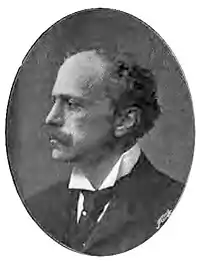
| Party | Candidate | Votes | % | ±% | |
|---|---|---|---|---|---|
| Conservative | Charles Tyrrell Giles | 4,368 | 51.3 | +2.0 | |
| Liberal | Arthur Brand | 4,145 | 48.7 | −2.0 | |
| Majority | 223 | 2.6 | N/A | ||
| Turnout | 8,513 | 81.1 | +8.9 | ||
| Registered electors | 10,495 | ||||
| Conservative gain from Liberal | Swing | +2.0 | |||
Elections in the 1900s
| Party | Candidate | Votes | % | ±% | |
|---|---|---|---|---|---|
| Liberal | Arthur Brand | 4,007 | 51.0 | +2.3 | |
| Conservative | Charles Tyrrell Giles | 3,846 | 49.0 | −2.3 | |
| Majority | 161 | 2.0 | N/A | ||
| Turnout | 7,853 | 76.7 | −4.4 | ||
| Registered electors | 10,232 | ||||
| Liberal gain from Conservative | Swing | +2.3 | |||
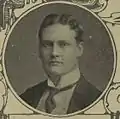
| Party | Candidate | Votes | % | ±% | |
|---|---|---|---|---|---|
| Liberal | Cecil Beck | 5,125 | 55.7 | +4.7 | |
| Conservative | T C Garfit | 4,080 | 44.3 | −4.7 | |
| Majority | 1,045 | 11.4 | +9.4 | ||
| Turnout | 9,205 | 83.4 | +6.7 | ||
| Registered electors | 11,033 | ||||
| Liberal hold | Swing | +4.7 | |||
Elections in the 1910s
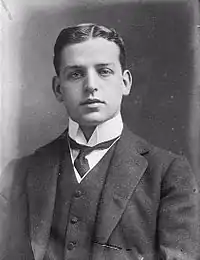
| Party | Candidate | Votes | % | ±% | |
|---|---|---|---|---|---|
| Liberal | Neil Primrose | 5,279 | 51.0 | −4.7 | |
| Conservative | T C Garfit | 5,079 | 49.0 | +4.7 | |
| Majority | 200 | 2.0 | −9.4 | ||
| Turnout | 10,358 | 88.4 | +5.0 | ||
| Liberal hold | Swing | −4.7 | |||
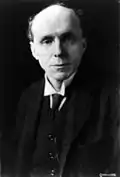
| Party | Candidate | Votes | % | ±% | |
|---|---|---|---|---|---|
| Liberal | Neil Primrose | 5,401 | 52.7 | +1.7 | |
| Conservative | Robert Cecil | 4,857 | 47.3 | −1.7 | |
| Majority | 544 | 5.4 | +3.4 | ||
| Turnout | 10,258 | 87.6 | −0.8 | ||
| Liberal hold | Swing | +1.7 | |||
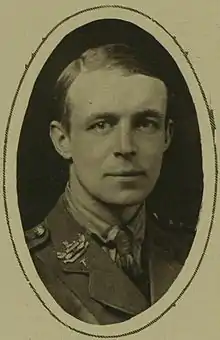
| Party | Candidate | Votes | % | ±% | |
|---|---|---|---|---|---|
| Liberal | Colin Coote | Unopposed | |||
| Liberal hold | |||||
Redistribution
The constituency ceased to exist when the Representation of the People Act 1918 redefined constituencies throughout Great Britain and Ireland. The new constituencies followed the boundaries of the administrative counties and county districts created by the Local Government Acts of 1888 and 1894. The historic county of Cambridgeshire had been divided by the legislation into two administrative counties: Cambridgeshire and the Isle of Ely. Each of these, along with the Parliamentary Borough of Cambridge, became single-member constituencies.[2] The whole of the former Wisbech constituency was included in the new Isle of Ely seat, to which were added the City of Ely and surrounding district.[2]
See also
- Parliamentary representation from Cambridgeshire
- List of former United Kingdom Parliamentary constituencies
References
- Boundaries of Parliamentary Constituencies 1885-1972, compiled and edited by F.W.S. Craig (Parliamentary Reference Publications 1972)
- Social Geography of British Elections 1885-1910, by Henry Pelling (Macmillan 1967)
- Leigh Rayment's Historical List of MPs – Constituencies beginning with "W" (part 4)
- "England". Hansard 1803 - 2005. Parliament of the United Kingdom. 13 April 1885. Retrieved 2009-04-19.
- Youngs, Frederic A, Jr. (1979). Guide to the Local Administrative Units of England, Vol.I: Southern England. London: Royal Historical Society. p. 716. ISBN 0-901050-67-9.
- F. W. S. Craig (1989), British Parliamentary Election Results, 1885-1918. Aldershot: Parliamentary Research Services. p. 228
- By-election triggered by the resignation of Charles William Selwyn.
- The Constitutional Year Book, 1904, published by Conservative Central Office, page 140 (164 in web page), Cambridgeshire
- "The Wisbech Election: Of a Unionist candidate". Yorkshire Post and Leeds Intelligencer. 10 Jul 1891. p. 3. Retrieved 22 November 2017.
- By-election triggered by the appointment of Arthur Brand as Treasurer of the Household.
- By-election triggered by the death of Neil Primrose.
